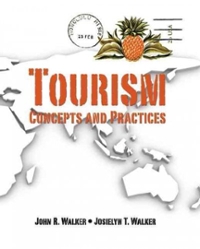Question
Traditional linear programming and optimisation approaches struggle with dynamic and unknown variables in secondary school resource allocation problems. These strategies work well with well-defined limits
Traditional linear programming and optimisation approaches struggle with dynamic and unknown variables in secondary school resource allocation problems. These strategies work well with well-defined limits and linear relationships but struggle with educational system dynamics. Due to renovations or priorities, student enrolment, instructor availability, and classroom capabilities can change each academic year. In contrast, simulation models flourish in unpredictable, dynamic, and multi-decision environments (Matovi & Ovesni, 2021). They are useful for resource allocation problems because they reflect secondary education's real-world complications. Simulation models provide a more realistic representation of the educational landscape by incorporating ever-changing factors, allowing educators and administrators to explore a variety of scenarios and gain valuable insights into resource allocation strategies. Simulation modelling is a practical and adaptive way to manage secondary education resource allocation's complex difficulties. Modelling methods work depending on the problem. Complex, diverse topics like secondary school resource allocation are better handled through simulation models. They provide a holistic view of the problem by exploring several scenarios and adding stochastic components. Linear programming or optimisation models may save time and resources for simple, deterministic issues. These models work best when mathematical equations and constraints effectively capture the situation. The problem's complexity, uncertainty, and dynamics should define the modelling technique. A simulation model provides the flexibility and realism needed to handle the various issues schools confront in satisfying students' diverse needs while efficiently using limited resources in secondary education resource allocation.
Matovi, N., & Ovesni, K. (2021). Interaction of quantitative and qualitative methodology in mixed methods research: integration and combination. International Journal Of Social Research Methodology, 1-15. https://doi.org/10.1080/13645579.2021.1964857
xxxxxxxxxxxxxxxxxxxxxxxxxxxxxxxxxxxxxxxxxxxxxxxxxxxxxxxxxxxxxxxxxxxxxxxxxxxxxxx
Please JUSTIFY or agree/disagree with the writer or answer the Above. And please do mention if you are justifying,agreeing,disagreeing or answering the above. Thanks
The note should have intext citations. For example, anything with numbers or quotes per paragraph. The intent citation just needs to be the Author's last name and year it was published. Please also include REFERENCES. Thanks
Step by Step Solution
There are 3 Steps involved in it
Step: 1

Get Instant Access to Expert-Tailored Solutions
See step-by-step solutions with expert insights and AI powered tools for academic success
Step: 2

Step: 3

Ace Your Homework with AI
Get the answers you need in no time with our AI-driven, step-by-step assistance
Get Started


